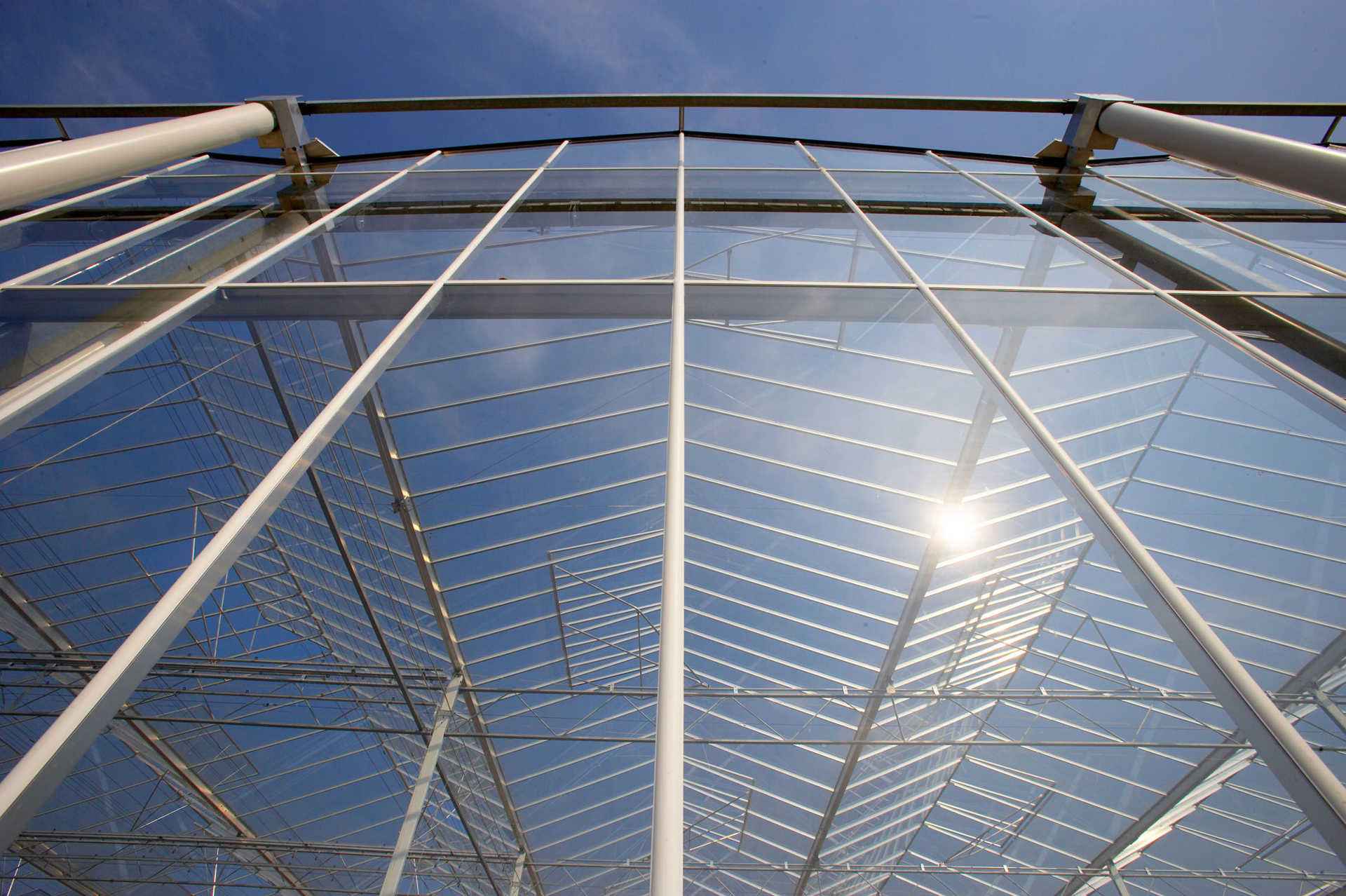-
Absolute Humidity (AH) is the actual water vapor content of greenhouse air expressed per unit mass of dry air or volume, used to manage moisture balance and condensation risk.
-
Adiabatic cooling is the reduction of air sensible temperature by evaporating water into the airstream, converting sensible heat to latent heat while total air enthalpy remains essentially constant.
-
Ambient temperature is the dry-bulb air temperature inside the greenhouse air space, measured near the crop and used as the primary control variable for heating, ventilation, and humidity calculations.
-
Biomass is the accumulated organic mass of the crop in greenhouse production, expressed as fresh weight or dry matter, resulting from photosynthesis and allocation of assimilates.
-
Convection energy is the heat flux exchanged between greenhouse air and internal surfaces driven by air movement and temperature differences, influencing the crop energy balance by heating or cooling leaves.
-
Daily Light Integral (DLI) is the total amount of photosynthetically active radiation (PAR) received by a crop canopy over 24 hours, representing daily photon input for photosynthesis and biomass accumulation in greenhouse production.
-
Dehumidification is the controlled extraction of water vapor from greenhouse air to stabilize humidity, reduce leaf wetness, and support evaporative cooling through ventilation, AHU condensation, or sorption systems.
-
Dew point is the temperature at which air with a given moisture content becomes saturated, causing condensation if cooled further. It informs condensation risk and climate control in greenhouses.
-
Dry Matter (DM) is the plant tissue mass remaining after complete water removal, used in greenhouse diagnostics and models as a moisture-independent growth measure.
-
Energy screens are materials or assemblies installed within a greenhouse to modulate infrared radiation, daylight, and air movement, reducing heat loss and controlling humidity.
-
Enthalpy is the energy content of moist air, the sum of sensible heat in dry air and latent heat in water vapor, used in greenhouses to assess ventilation and cooling needs.
-
Humidity Deficit (HD) is the difference between the maximum possible absolute humidity at the current temperature and the actual absolute humidity, indicating the air's capacity to absorb moisture.
-
Latent heat is the energy involved in phase changes of water that alters air enthalpy without changing dry-bulb temperature in greenhouses.
-
Leaf Area Index (LAI) is the leaf area per unit ground area used in greenhouse radiation and growth models to estimate photosynthetically active radiation interception by the canopy.
-
Mechanical cooling uses active systems like vapor-compression chillers and heat pumps to remove heat and moisture from greenhouse air or provide root-zone cooling, enabling precise climate control beyond ventilation and evaporative methods.
-
PAR is the portion of light in the 400–700 nm range used by plants for photosynthesis, measured as photon flux density at the crop canopy.
-
Photoperiod is the daily light dark cycle that plants perceive to time developmental transitions such as flowering and growth, controlled through supplemental lighting and darkening methods in greenhouse production.
-
Relative Humidity (RH) is the percent ratio of actual water vapor in greenhouse air to the maximum it can hold at the current air temperature.
-
Respiration in greenhouse crops is the mitochondrial oxidation of carbohydrates that releases CO2 and provides ATP for growth and maintenance, including growth and maintenance respiration.
-
Sensible heat is the portion of greenhouse air enthalpy tied to dry-bulb temperature, representing energy needed to raise or lower air temperature without phase change.
-
Thermal mass is the heat storage capacity of structural or substrate components that absorb and release energy to moderate temperature fluctuations in greenhouses.
-
Transpiration in greenhouse contexts is the movement of water vapor from plant tissues into the surrounding air, driven by stomatal conductance and environmental conditions, and it is a major component of the crop water balance.
-
U-Value is the overall heat transfer coefficient of greenhouse glazing systems, representing heat transfer rate through the cover under a temperature difference, used to predict heat loss and inform energy budgeting.
-
Vapor pressure deficit (VPD) is the difference between saturation vapor pressure and actual vapor pressure in greenhouse air, expressed in kPa, used to estimate transpiration potential and guide climate control.
